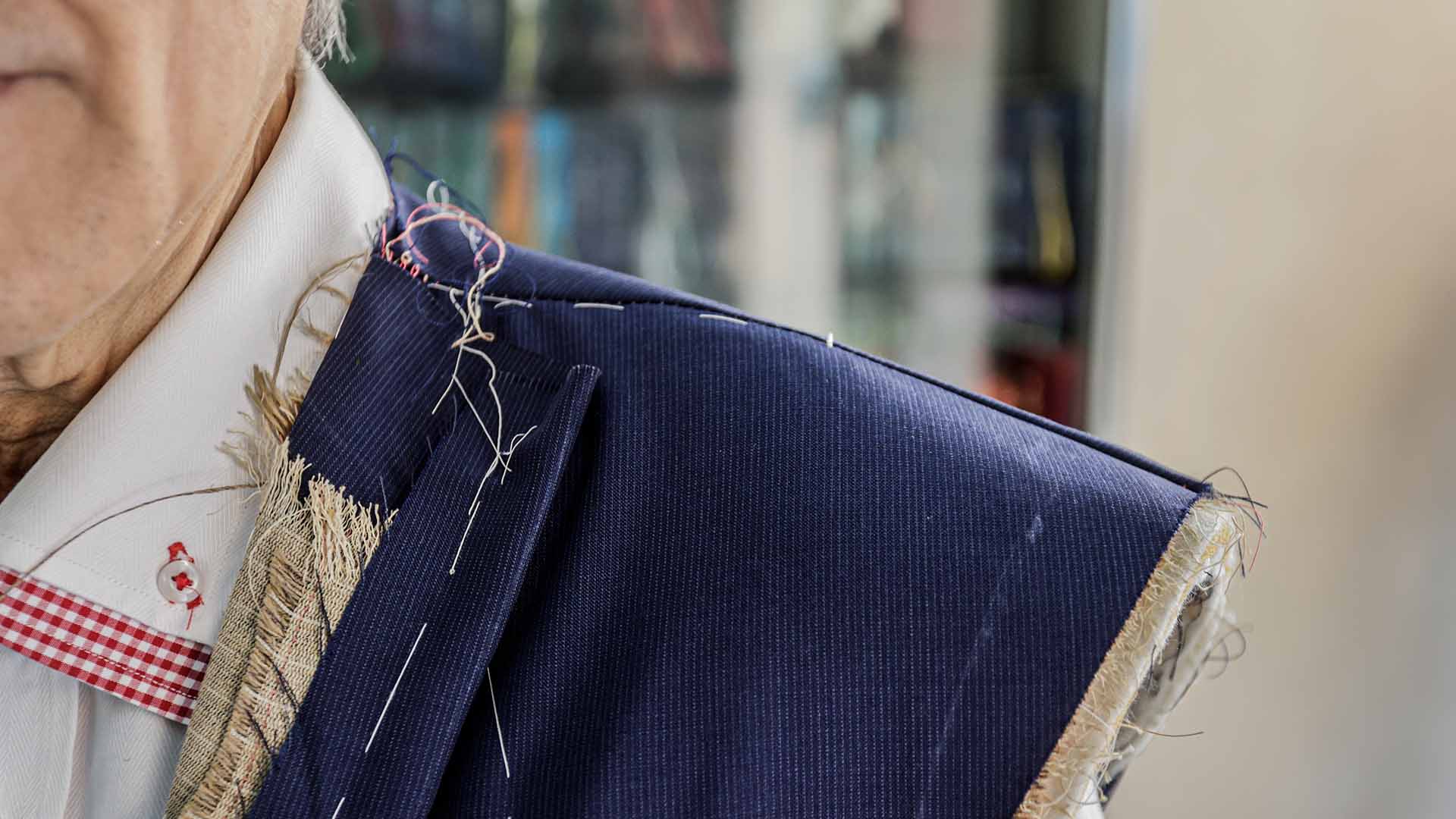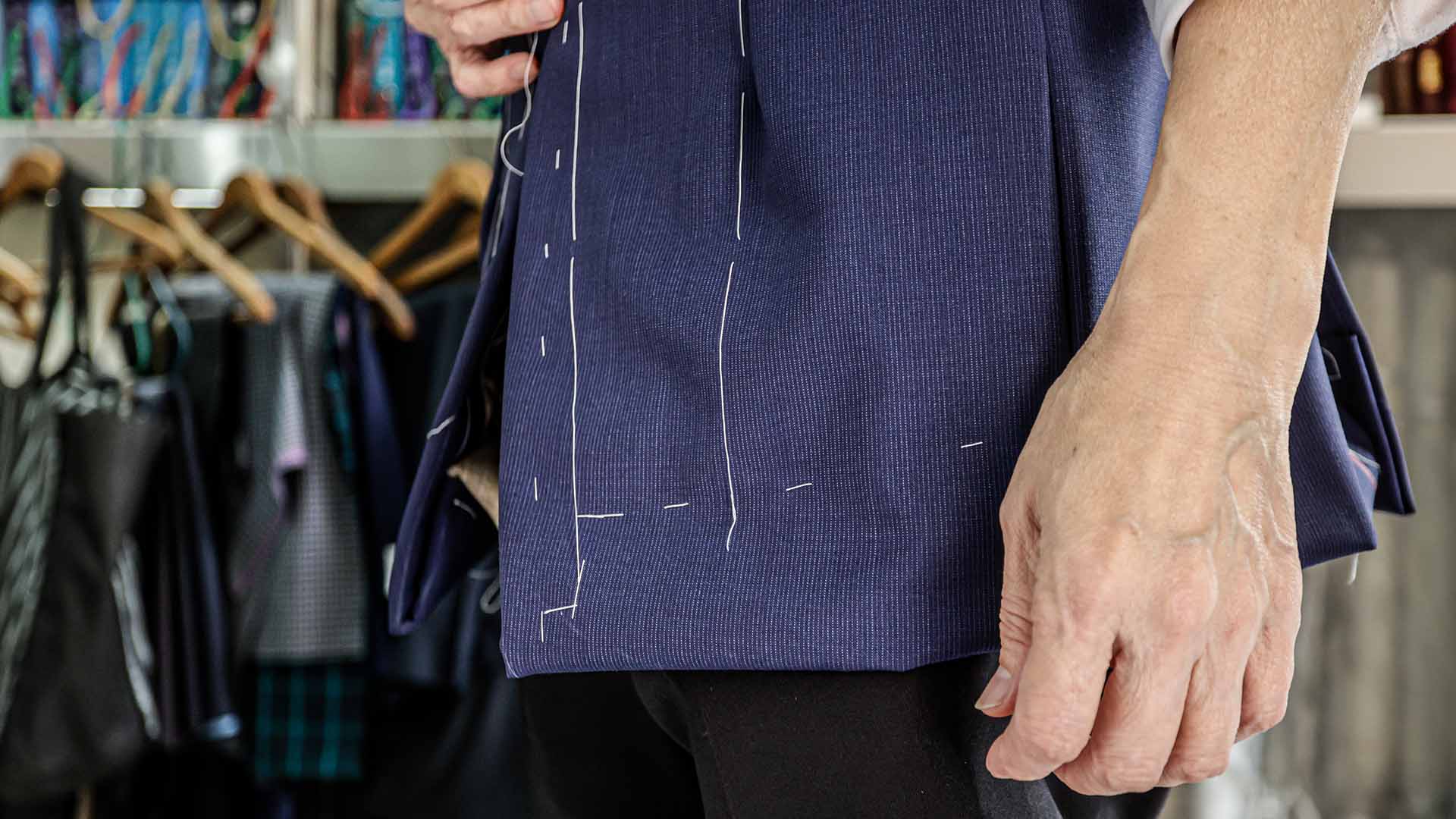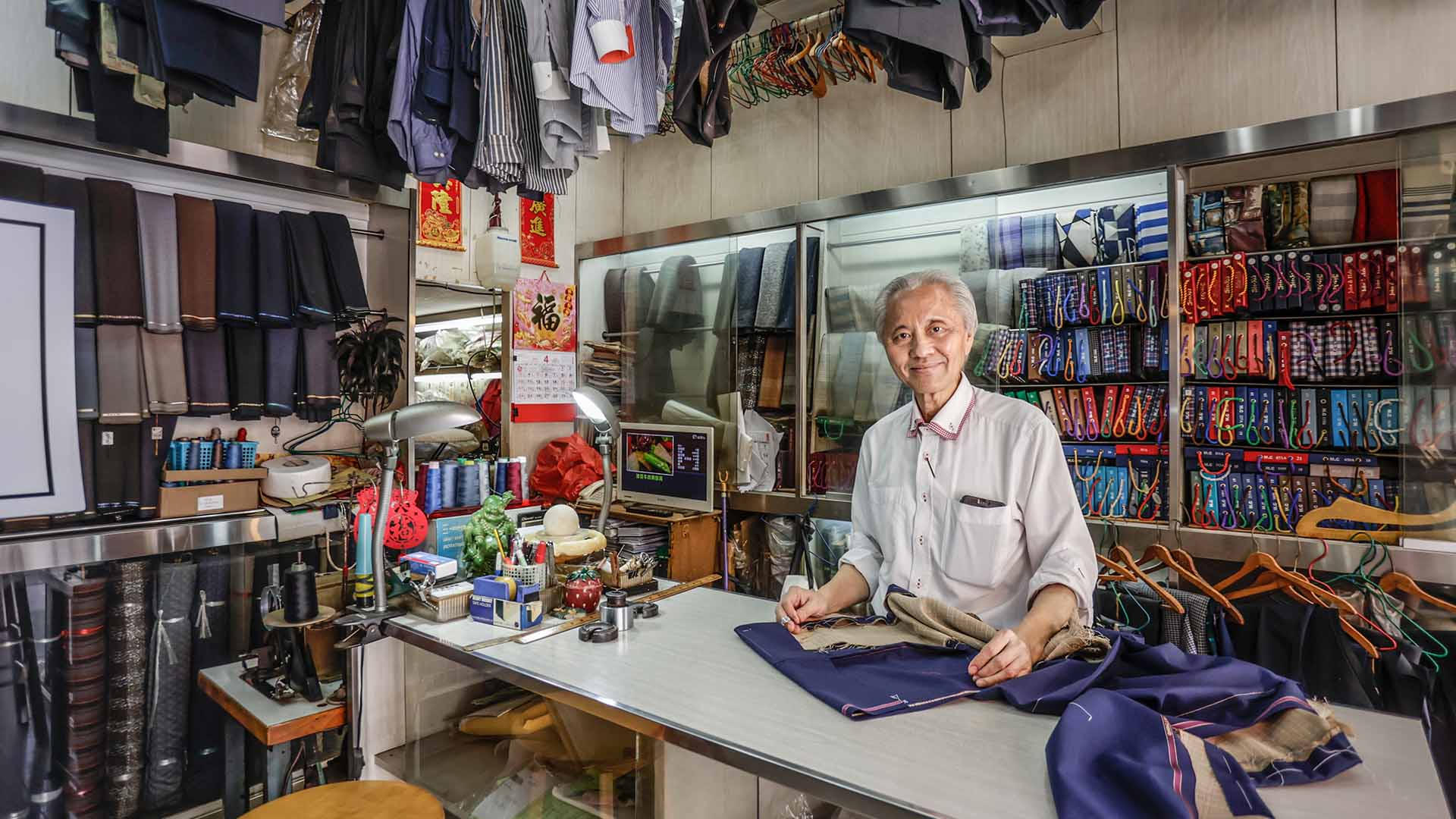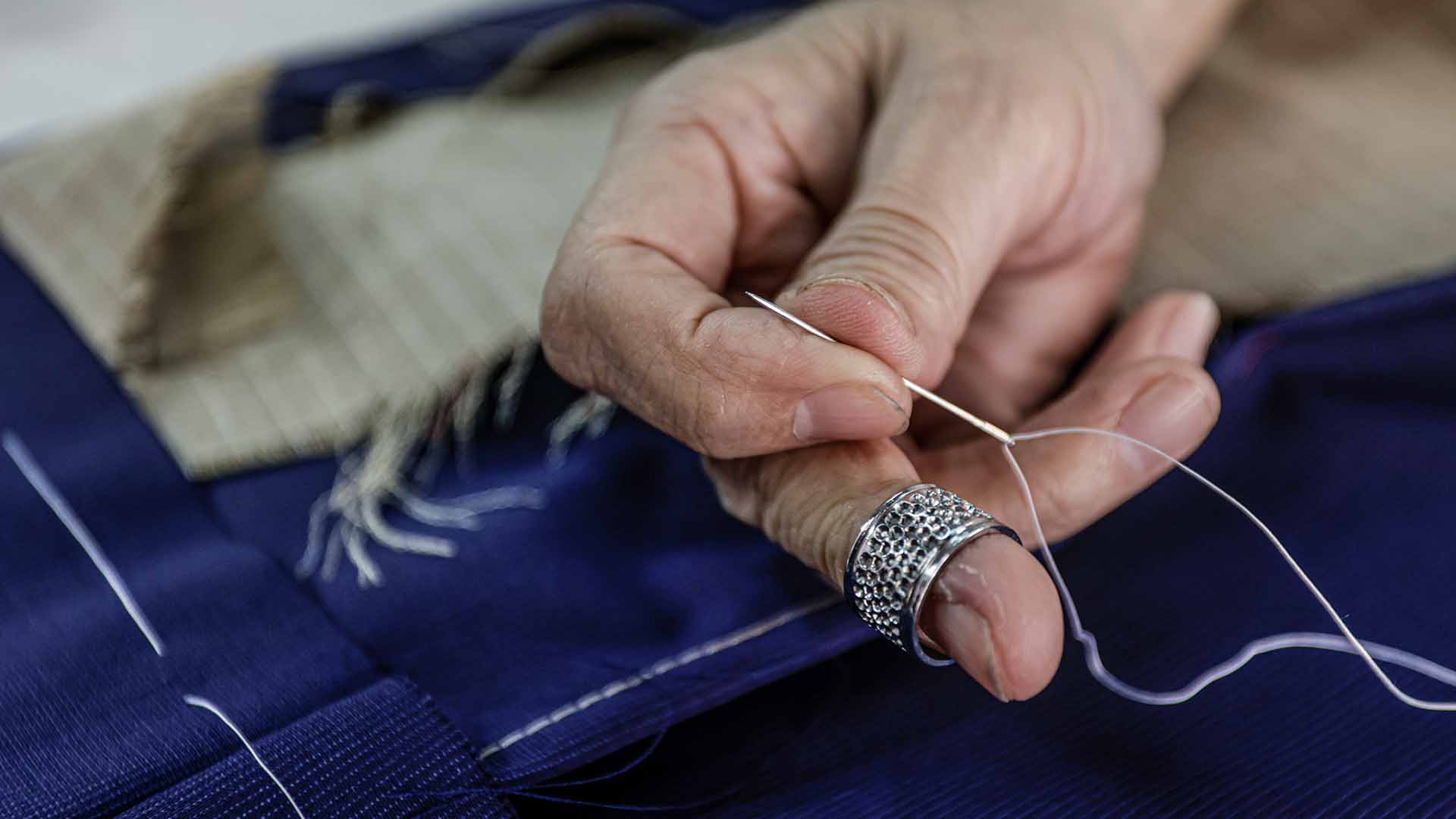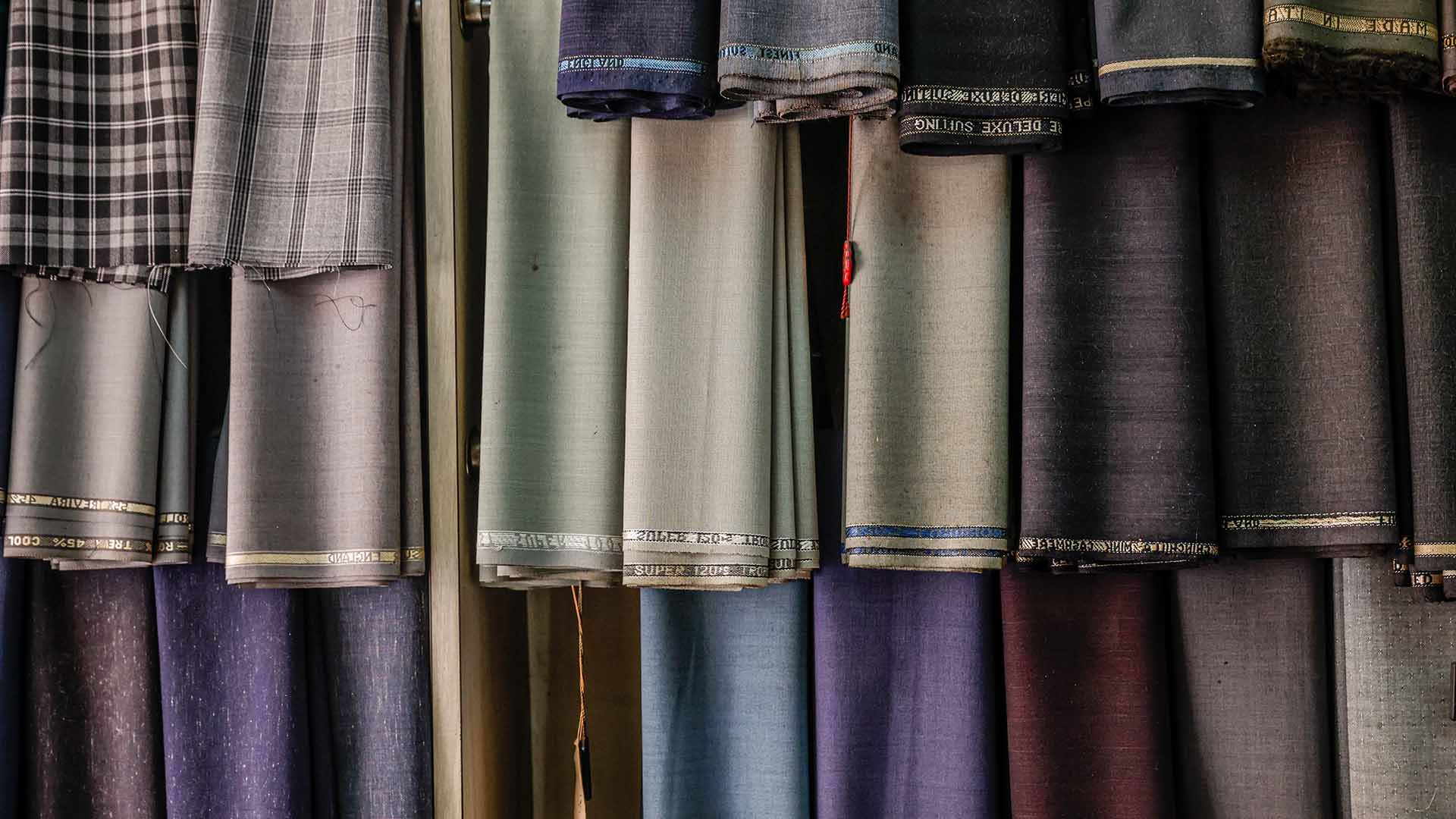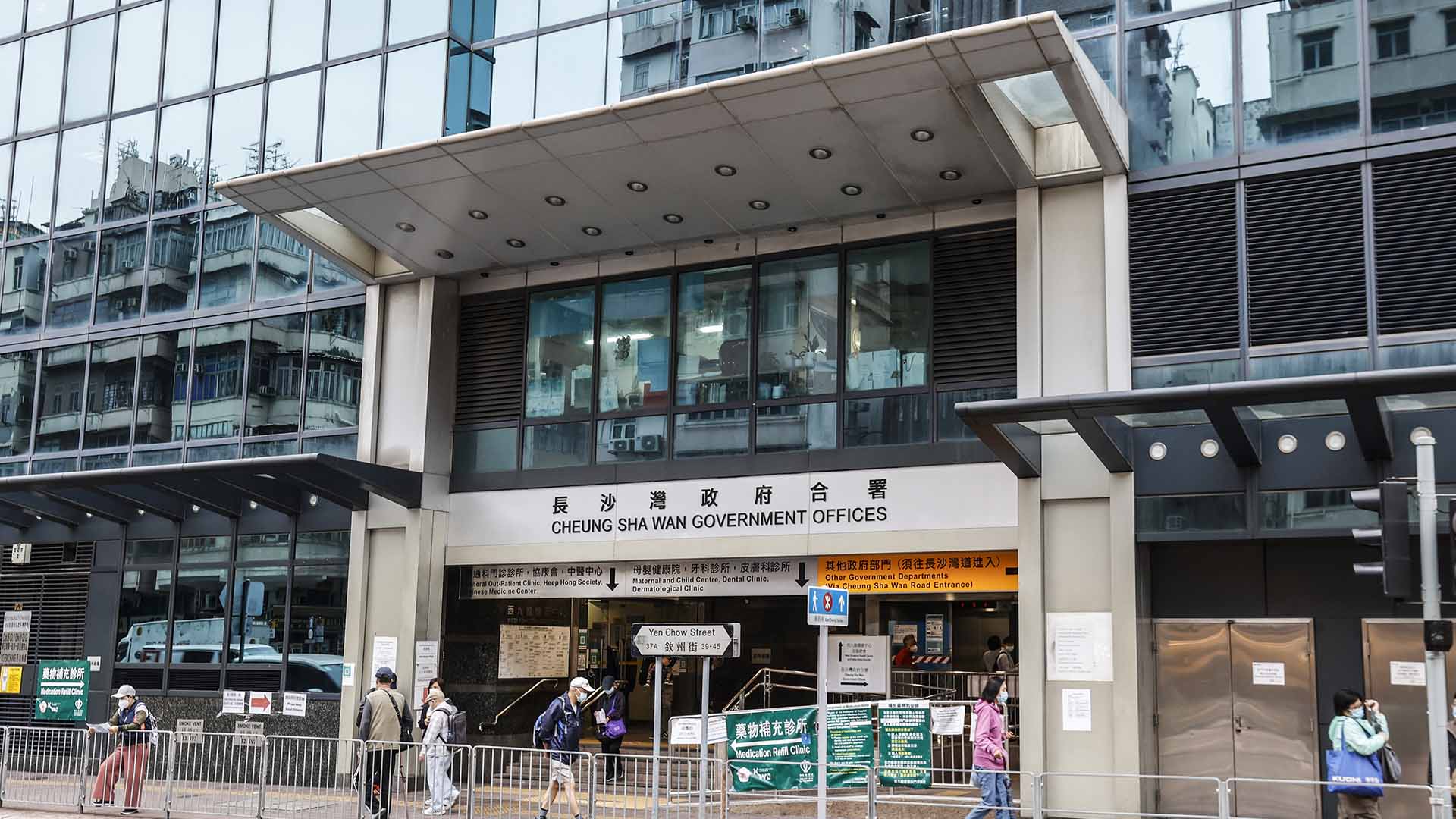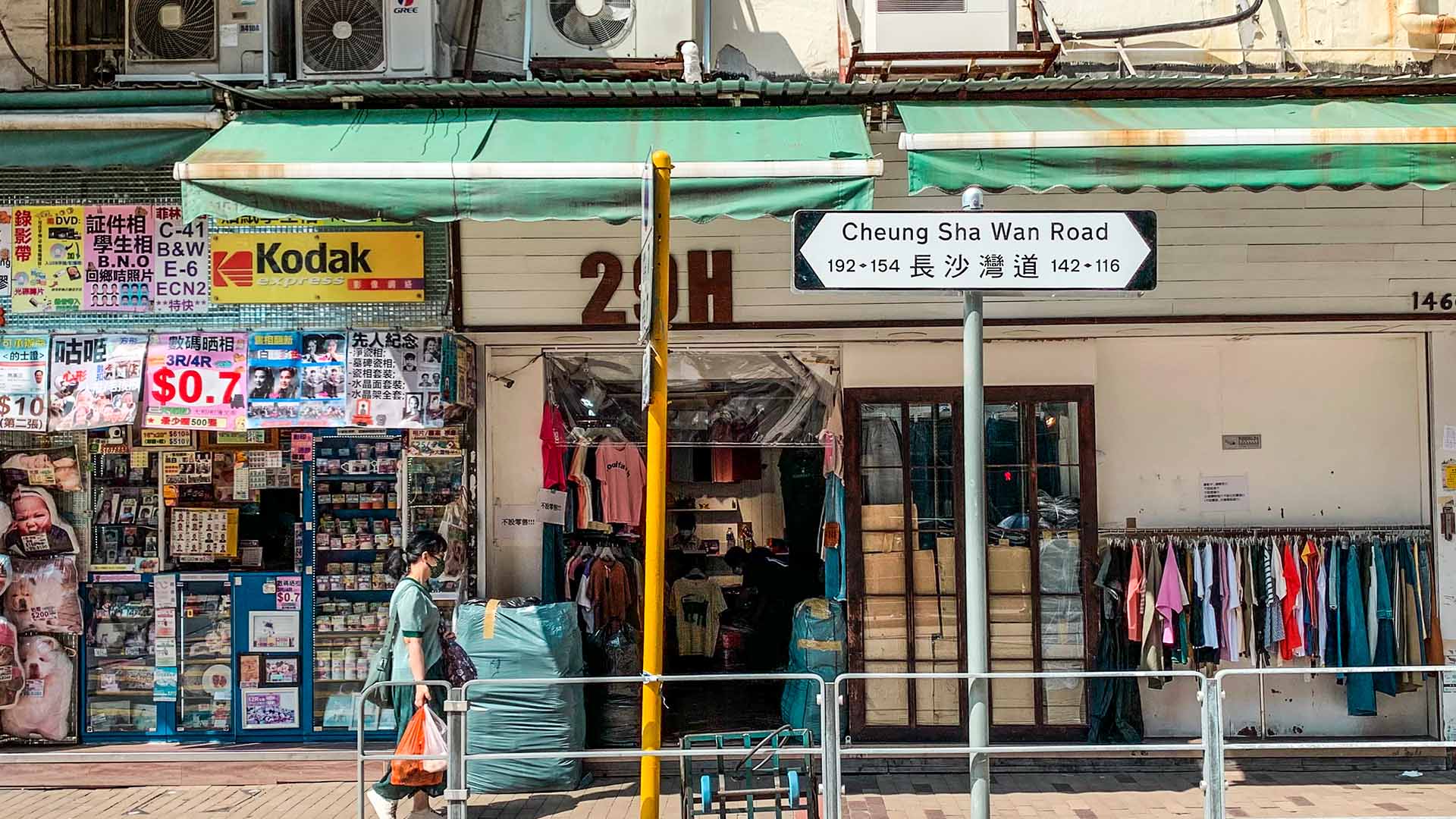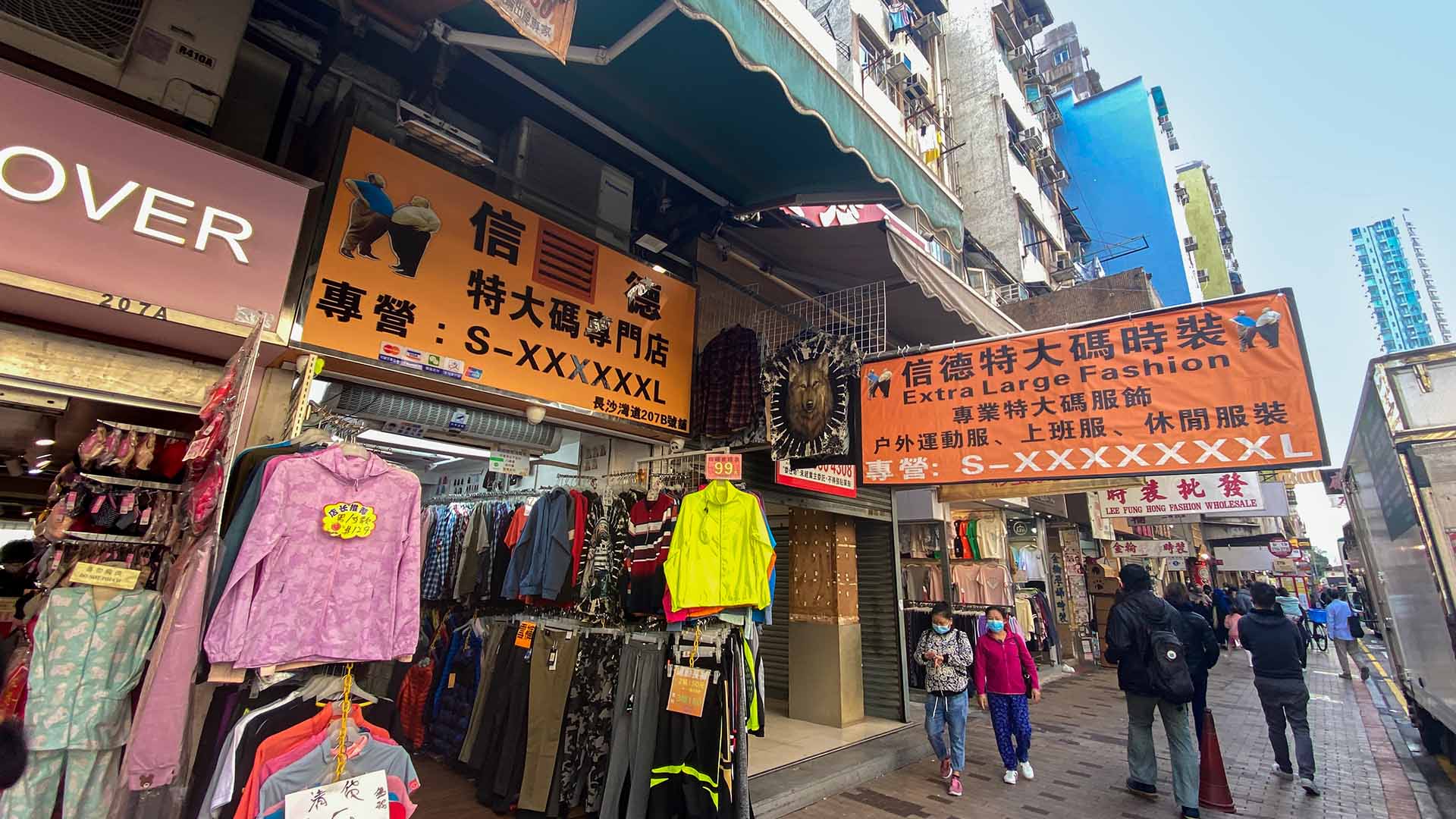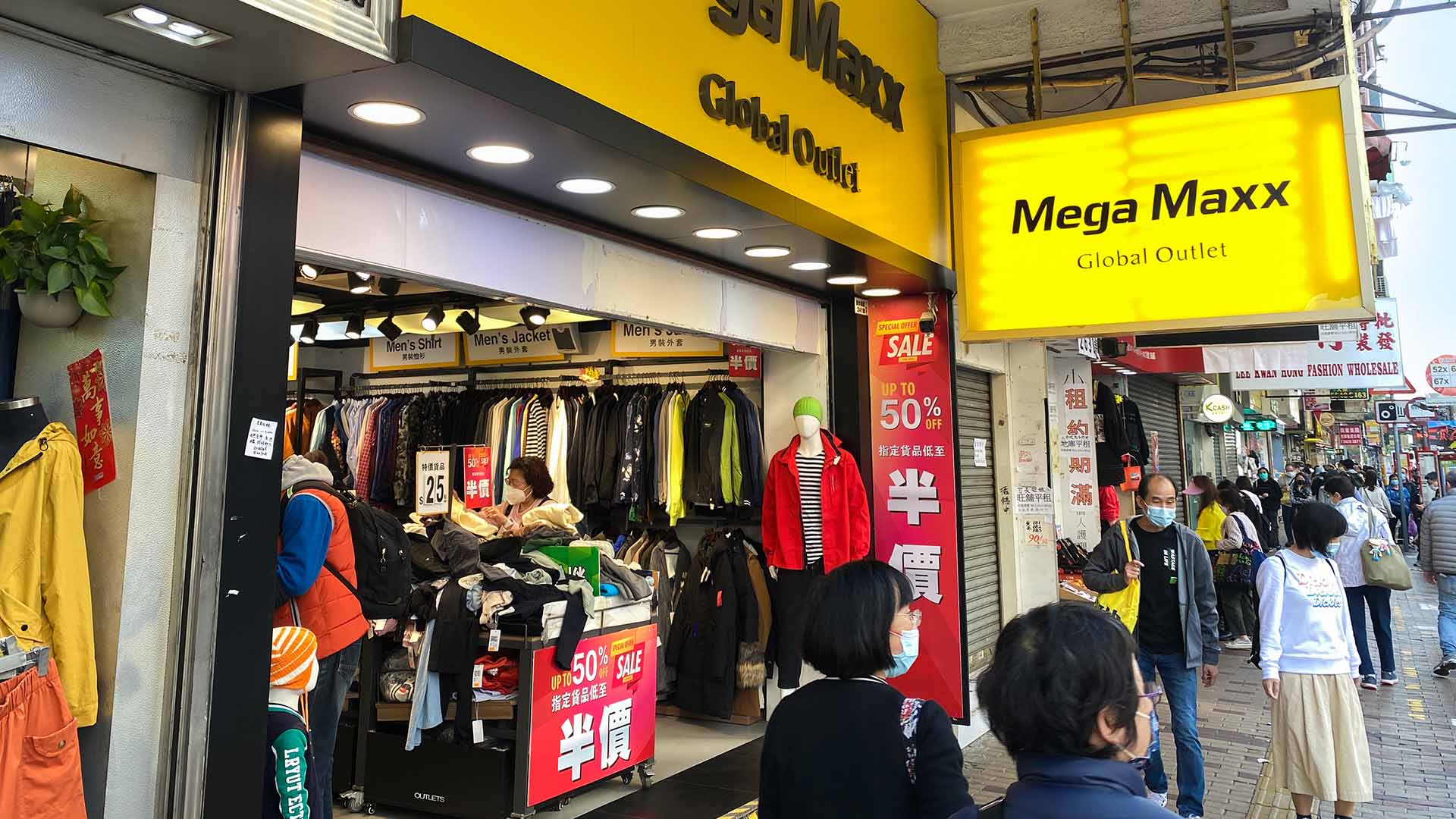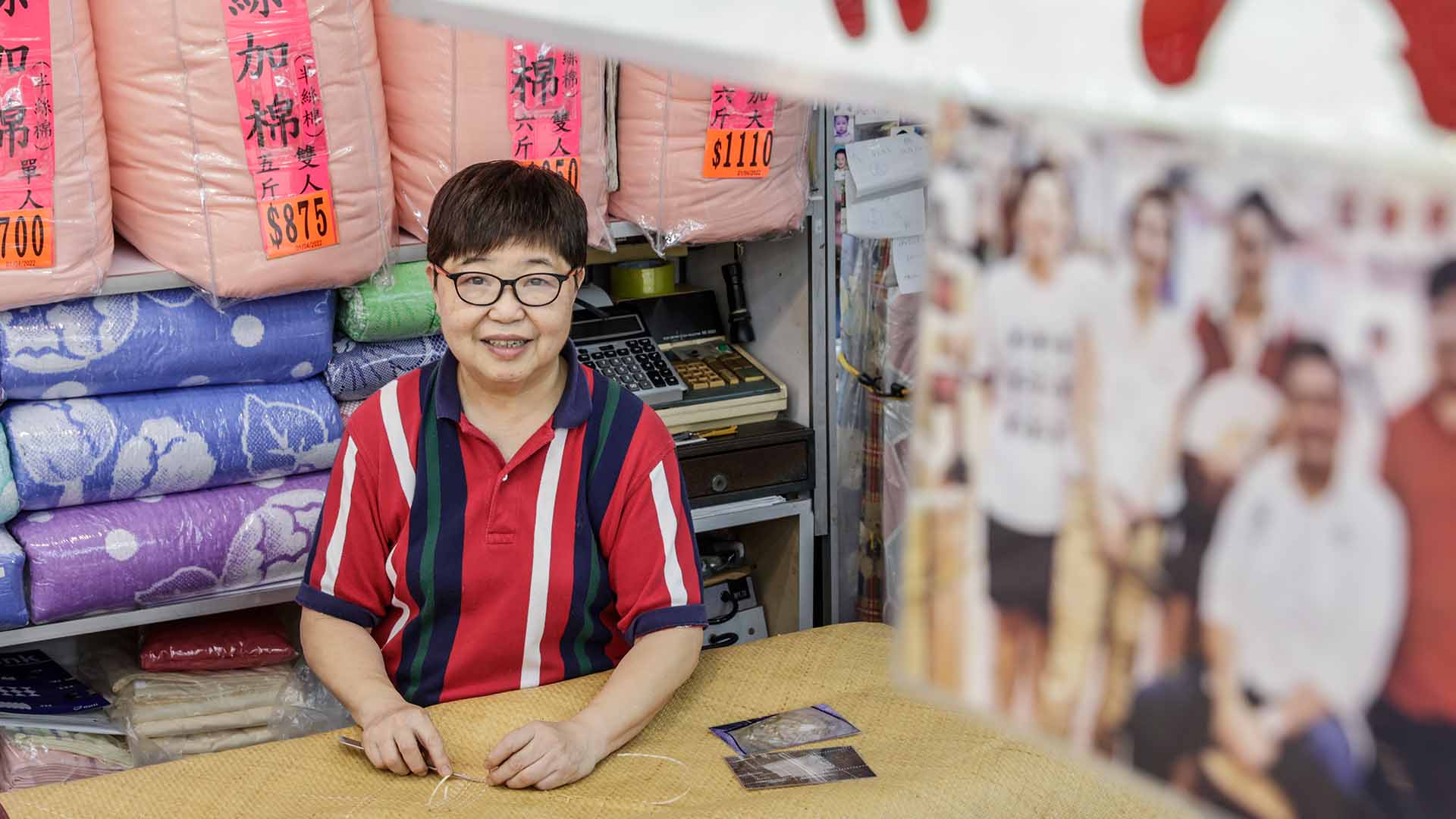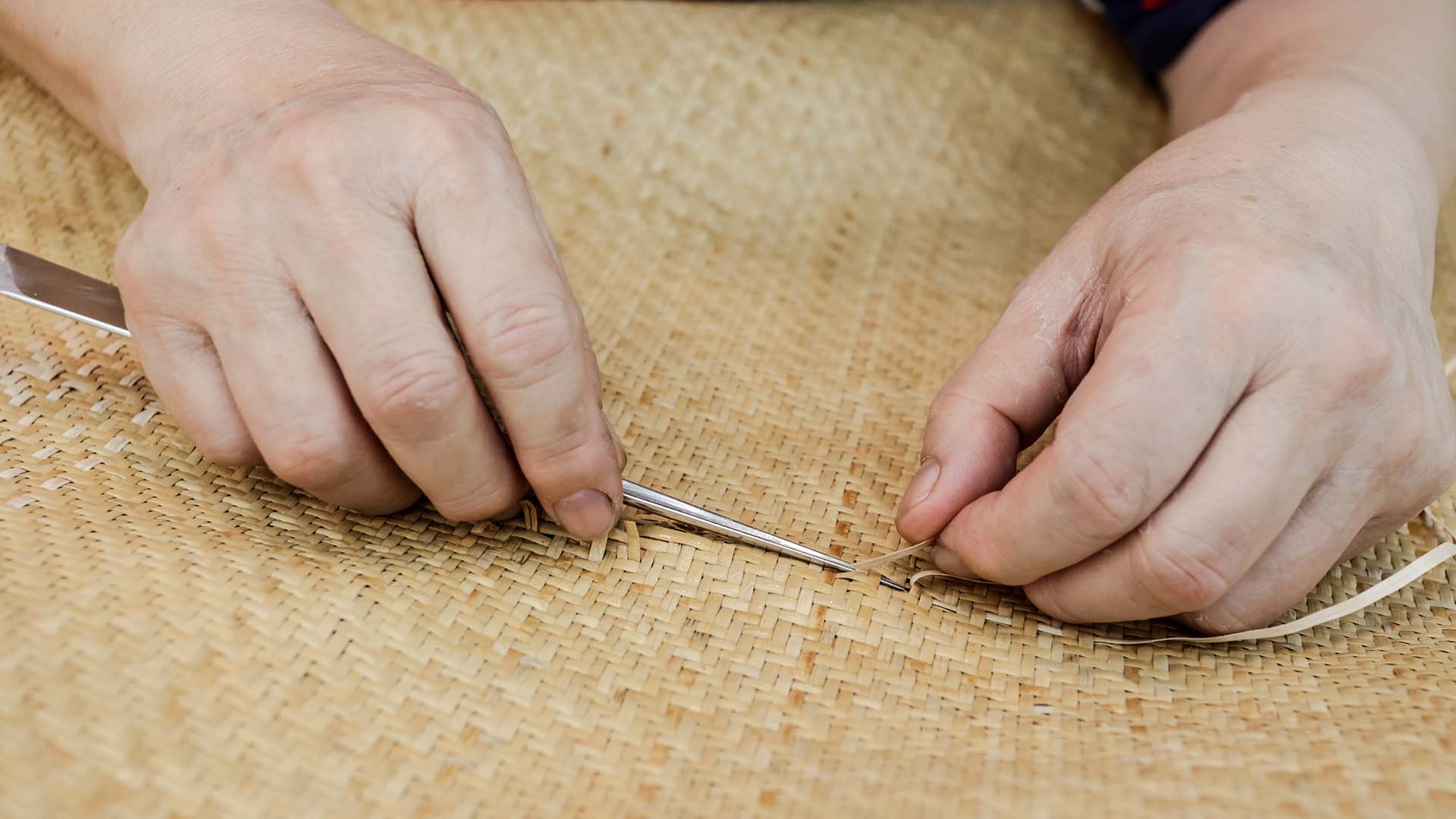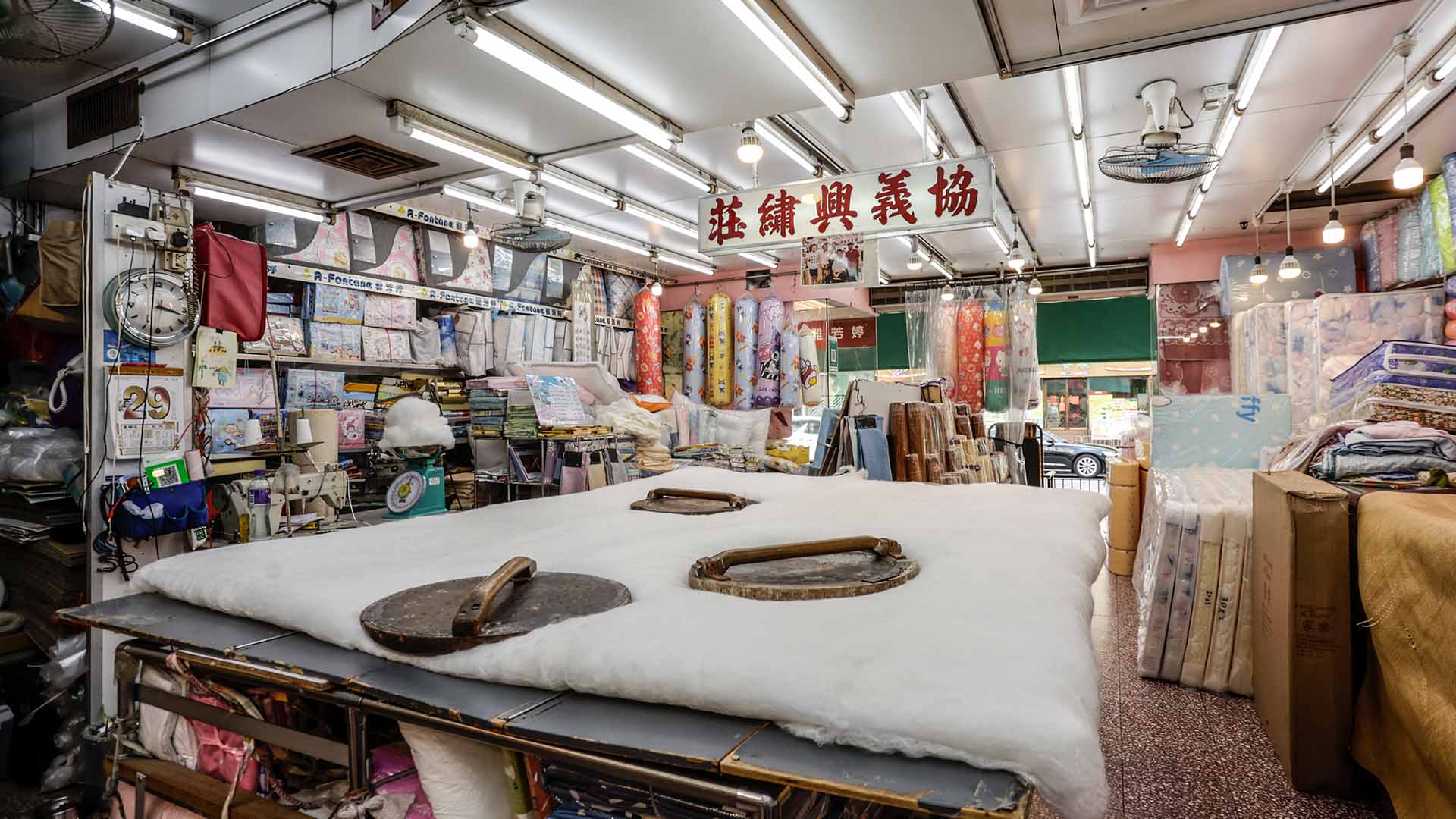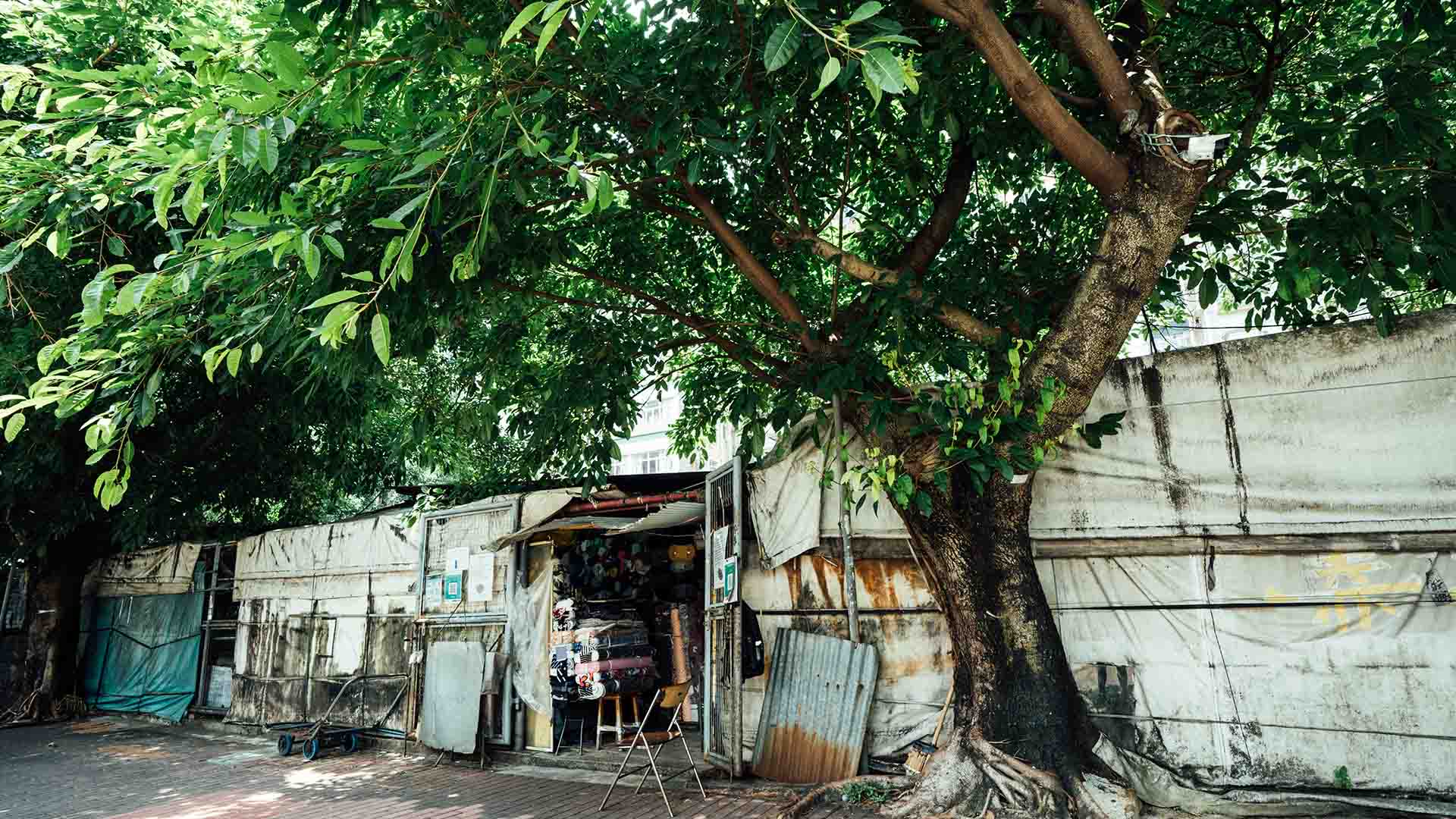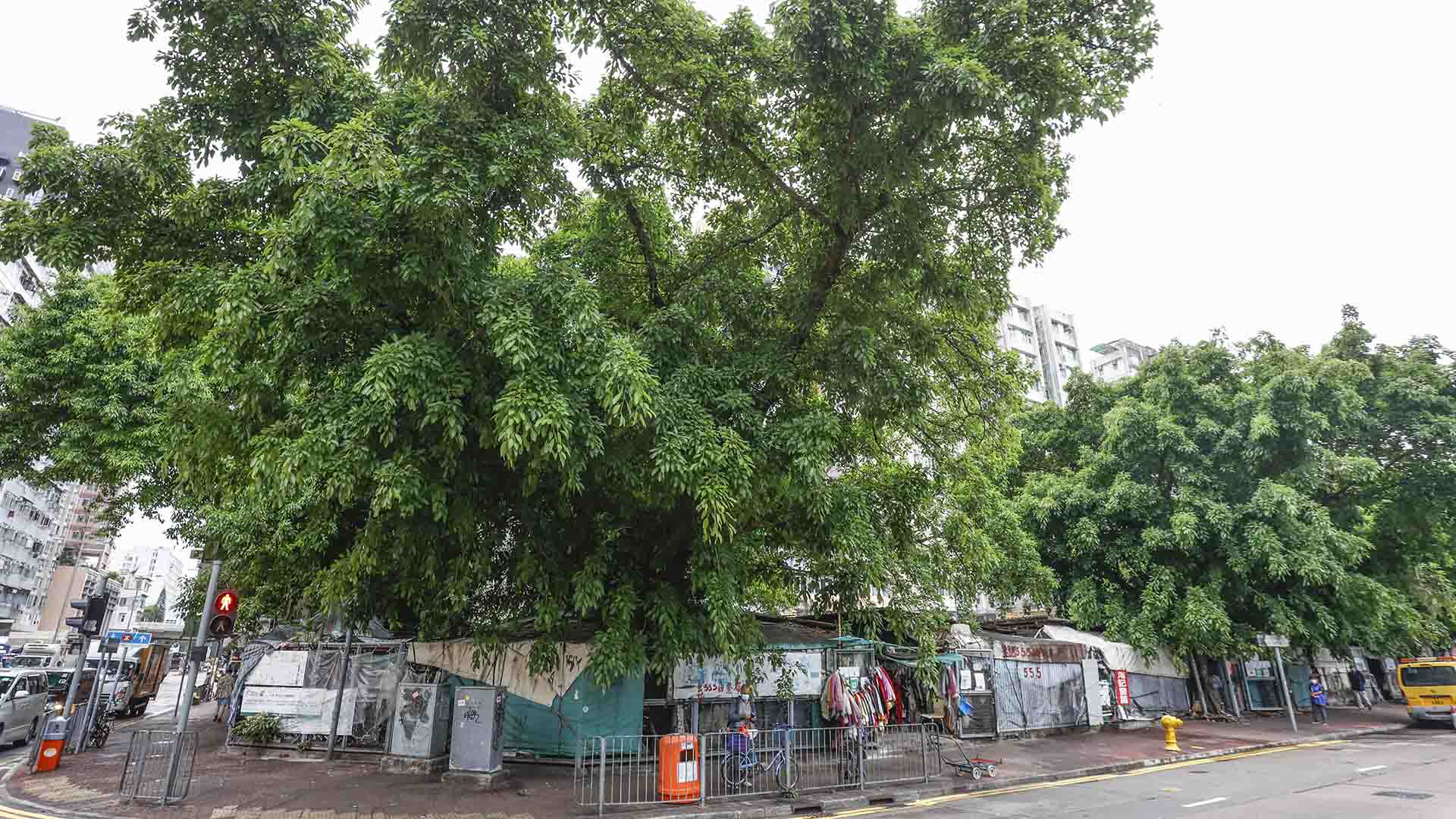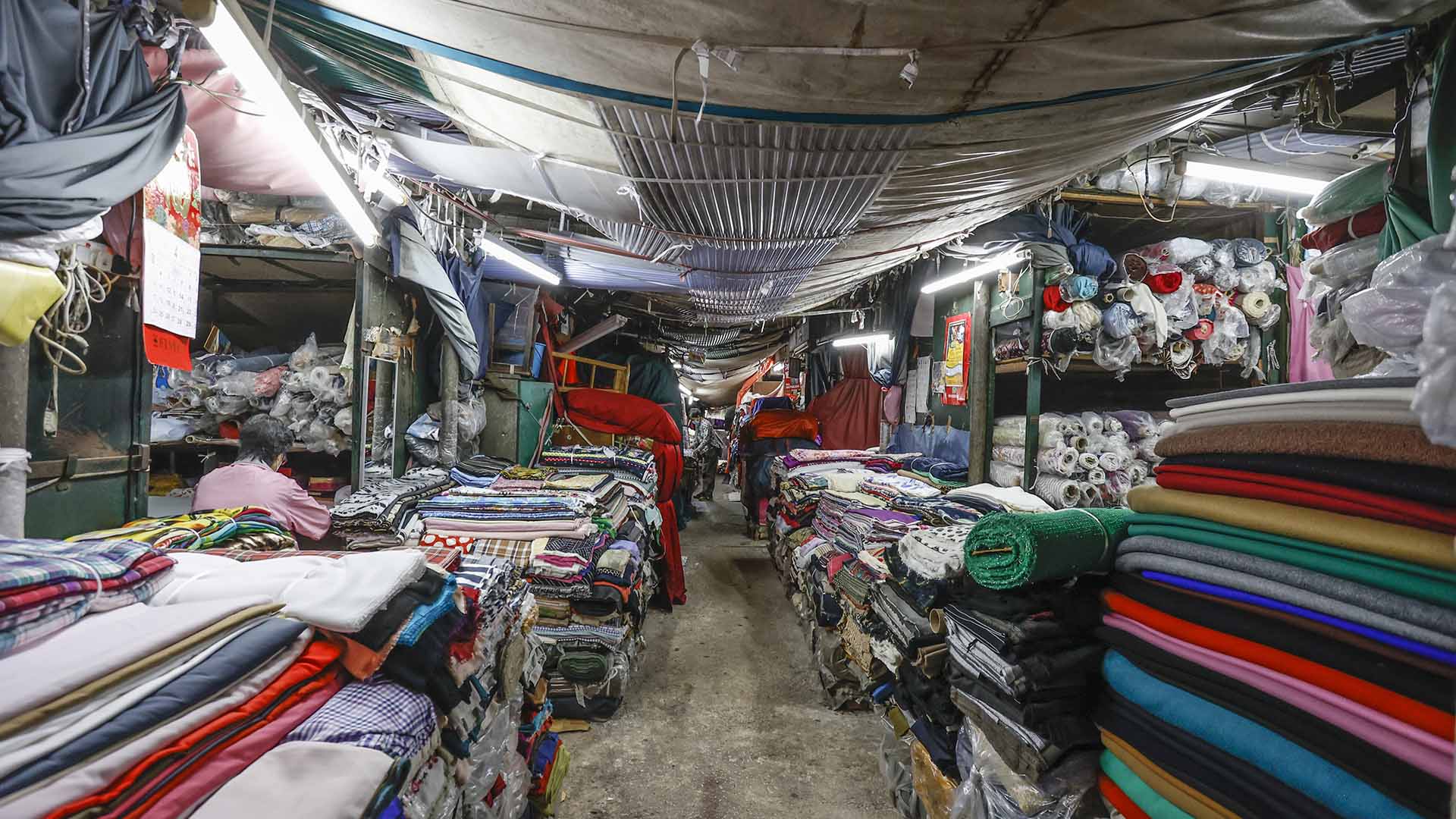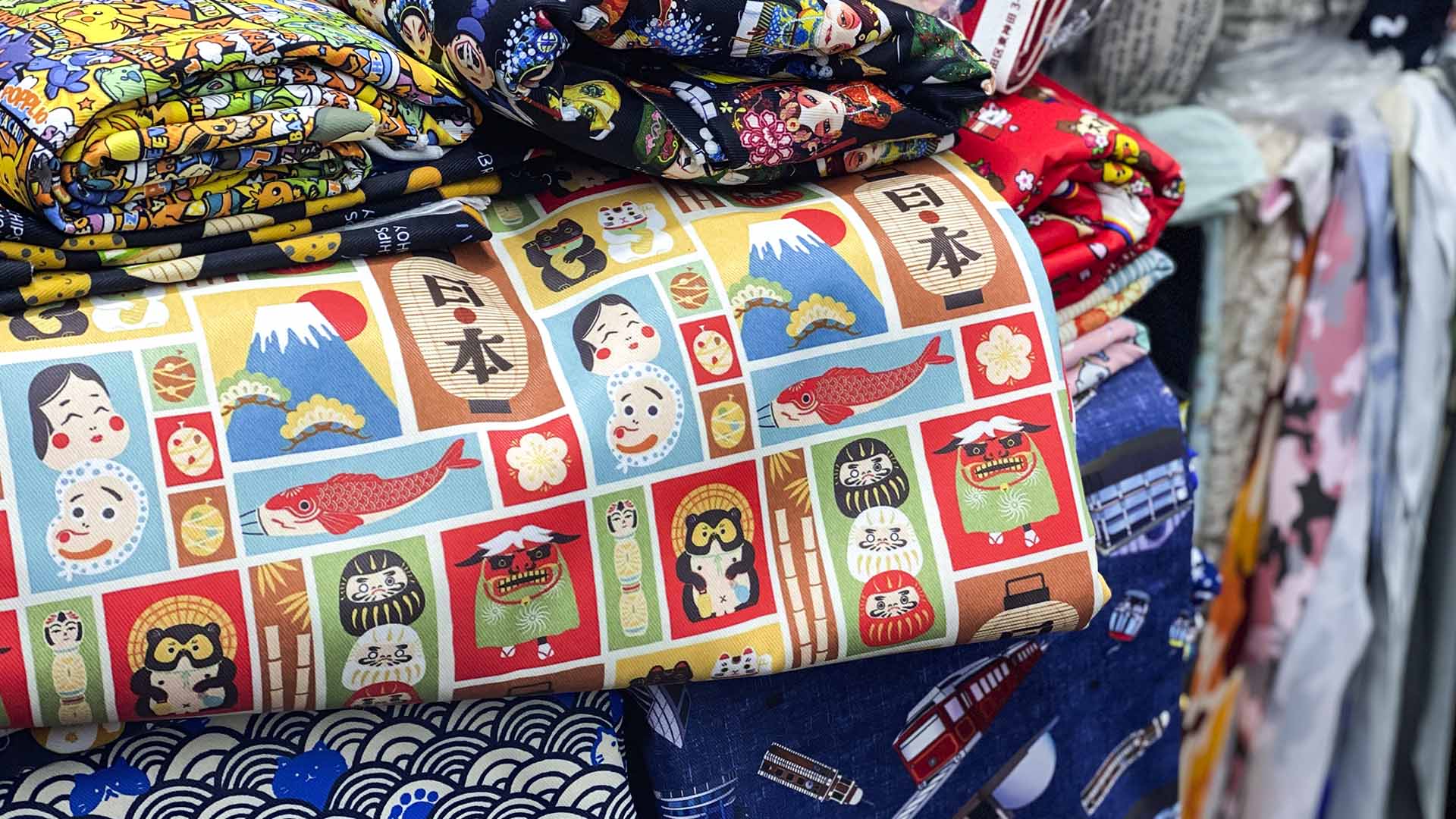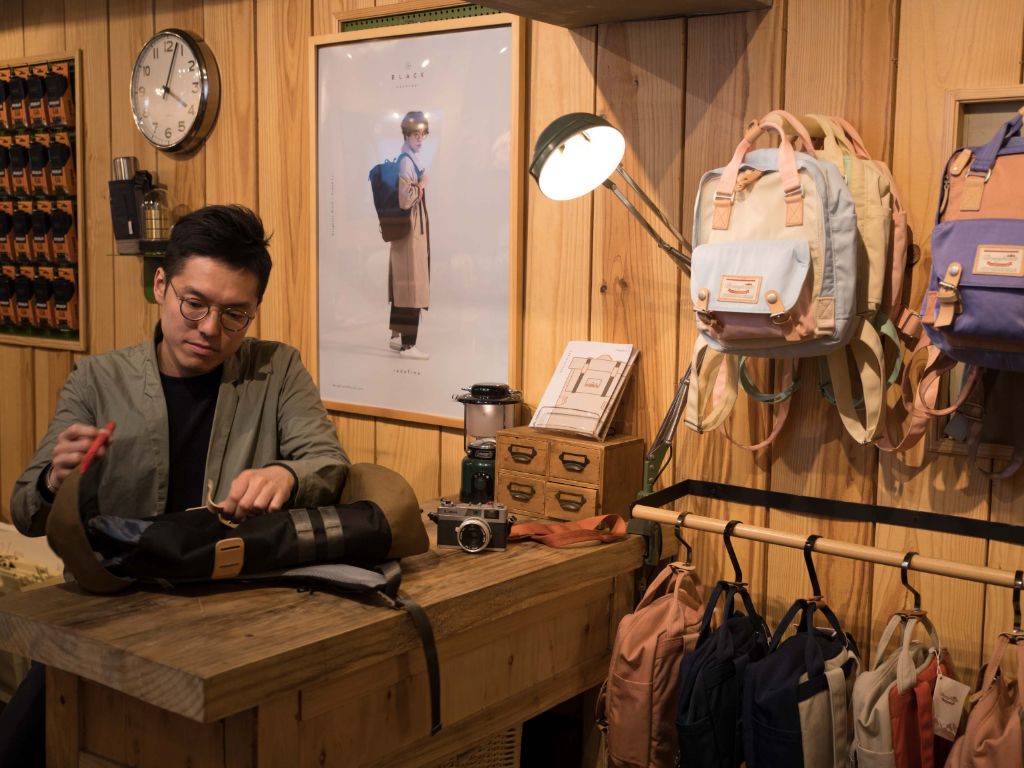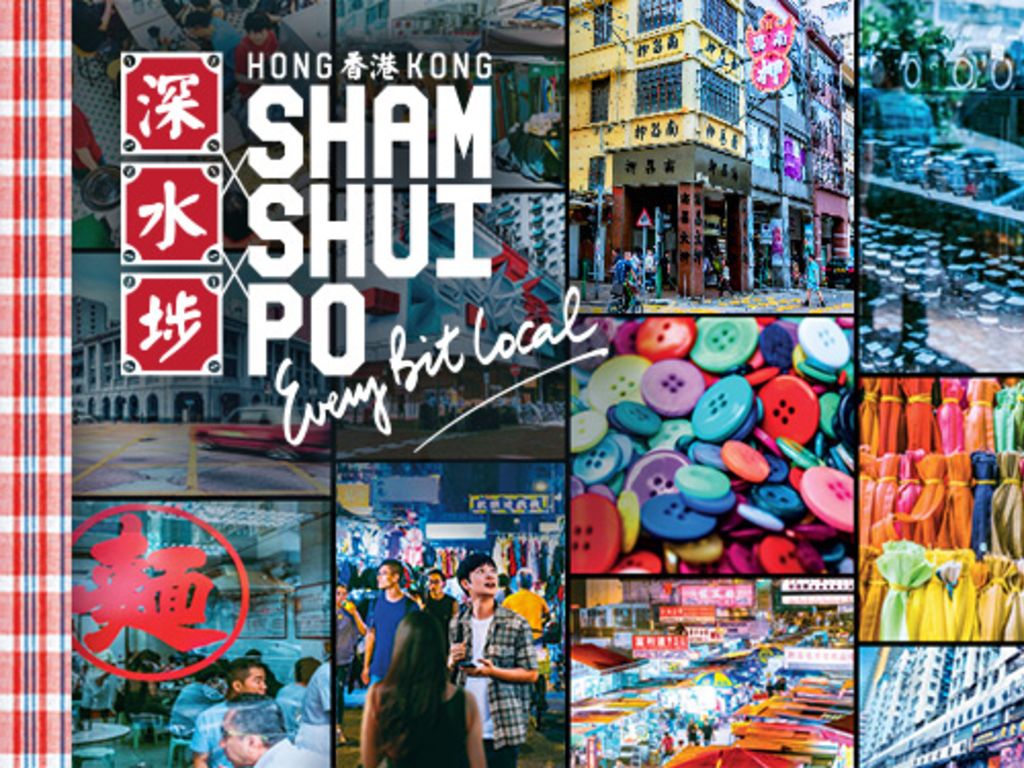Increase of duty-free allowance for luggage articles brought into the Mainland by Mainland residents travelling from Hong Kong takes effect from 1 July 2024. Click here for details.
Fun facts
How should a suit fit? A well-fitted suit should feature sleeves that just reach the large wrist bone and if the shoulder of the suit dips in and flares out, the size of the jacket is too big. The bottom of the trousers should rest on the top of your leather shoes, and if there are loads of horizontal creases when you sit down, then the trousers are too tight.
Interesting stories
Sham Shui Po’s Boma Tailor guards the last vestiges of sunset industry
A well-made suit was a status symbol some 40 years ago. Members of the upper class would compare the craftsmanship and embroidery of their suits, so naturally tailoring was a respected profession. Boma Tailor was founded by Paul To, now 74, in 1981. Even though he’s been in the business for over 60 years, he still insists on tailor making one-of-a-kind suits for his customers by hand.
Boma Tailor’s first shop was located on Nam Cheong Street, also known as ‘Ribbon Street’. At the time, Sham Shui Po was known for being the heart of the textiles manufacturing industry, along with ‘Bead Street’ (Yu Chau Street), ‘Button Street’ (Ki Lung Street) and ‘Leather Street’ (Tai Nan Street). Hong Kong saw its manufacturing heyday in the 1970s, with family-style factories opening up in Sham Shui Po when labour costs were low. Custom-made Western-style clothing required several craftsmen to assist with measuring, tailoring and repairing, attracting a slew of apprentices to learn the trade.
“At the time, tailors were lined all the way from Nam Cheong Street to Garden Hill, there were more tailor shops than stores selling rice,” To says.
A tailor’s skill is evident by the suit’s interlining — the internal layer sandwiched between the inner lining and the outer fabric of a suit jacket. The purpose of the interlining is like a skeleton, it is designed to give the suit the required structure to fit on the frame, but also the mobility to move with the person’s body. A majority of the interlinings found in mass-produced suits of today are glued together, making the jackets feel stiff, and after a few washes, ripples will begin to appear on the lapel. While sewing the interlining into the fabric one stitch at a time is time consuming, the result is a long-lasting and well-fitted suit.
In 1997, Boma Tailor moved from Nam Cheong Street to Wong Chuk Street. But To was not concerned he would lose any business after establishing relationships with longtime clients over the years and becoming close friends with many of his regulars. “For some clients, I’ve been making tailor-made suits for their family members for several generations,” To shares, “the tailor shops didn’t shut down, they were just forced to retire when the custom clothing industry began to decline in the late 1990s.”
Tailoring requires absolute precision. Even the slightest mistake can compromise the entirety of the suit, so tailors need to possess keen eyesight and a dexterous pair of hands. Many tailors were forced to close their shops as they aged because they had no one to pass their skills on to, but To believes that bespoke tailoring is still a valued and sought-after skill. Even if he is unable to find a successor, he vows to carry on until the very end: “I have never thought about retiring. As long as my body is able, I will continue on.”
Fun facts
Before Cheung Sha Wan became part of the reclamation development, it was a long sandy beach and the coastline was near Cheung Sha Wan Road which opened in the 1920s. There was also a small village located near where Un Chau Estate and Cheung Sha Wan Station currently is. Aside from fashion stores, there is an important landmark here: the Cheung Sha Wan Government Offices, which was once the location of the British army barracks and a Vietnamese boat camp.
Insider’s tips
A fashion street can leave you dazed and confused, and we’re here to help — here are some recommended shops for you to start shopping: Lung Wa Fashion Road offers extra-large fashion items, including office, casual and outdoor clothing with modest price tags; if you’re looking for International brands, check out Mega Maxx Global Outlet; then there’s Boology, a second generation, sub-brand of an over 30-year-old clothing factory, with affordable yet fashionable styles for you to choose from.
Interesting stories
Hip Yee Hing Embroidery leaves a legacy as a torchbearer of craftsmanship
From becoming one of Hong Kong’s earliest public housing blocks to a resettlement site after a devastating fire in the 1950s, Shek Kip Mei Estate has undergone a tremendous transformation. Hip Yee Hing Embroidery, which began operation in 1967, has witnessed the neighbourhood’s development over the last 50 years. After moving to Nam Cheong Street in the 1980s, Hip Yee Hing has now occupied Block 20 of the estate for over 40 years. The embroidery shop is filled with mementos from the past — a stone press that was used to flatten quilts was left behind by the masters of the trade when they retired, and the wall clock was a gift from a local resident when the store opened half a century ago.
Hip Yee Hing’s second-generation owner Lam Mei-sin grew up in the resettlement block where the store is located. As a student, she would carry silk floss filling (used to make silk comforters) on her back, weaving her way through the narrow alleys to deliver the materials to the craftsmen. She began spending time at the store to supervise the staff, and as time passed, she too picked up a passion for the craft. The quilts are handmade with mostly silk floss. The filling is stretched over the knees to create a round shape that is similar to a pig’s belly, resulting in the Chinese nickname ‘pig stomach cotton’. Handwoven silk comforters are lighter and warmer than modern duvets, not to mention hypoallergenic. The silk floss is cut, stretched, and layered by hand into the shape of a blanket. It is then flattened with a stone press then sewn into the duvet cover, with the whole process taking two to three hours. Quilts were necessities in every household in the 1970s, when Hong Kong winters came earlier and with a cold vengeance. “You couldn’t live without a blanket during the cold days. Cotton blankets were very valuable at the time and a lot of people would use them as collateral at pawn shops,” comments Lam.
People would make a dedicated trip just to buy pure silk comforters during the emigration wave in the 1990s. When properly maintained, the comforter can last for decades. Many of their regular customers left after the estate began redevelopment. The warmer weather also meant that blankets were no longer in demand, leaving Lam with a business at one of its lowest points in 2003.
There was a time when Lam earned just enough to cover the rent, but she stood strong. “My family told me not to take over, saying business was not doing well enough to continue on,” remembers Lam, “but I couldn’t bear to leave this place.”
After taking over, Lam launched several new products in an attempt to stimulate sales. In addition to the pure silk duvets, she also sold more affordable variations made of a silk-cotton blend, and ‘air conditioning duvets’ that weighed two pounds, two pounds lighter than the traditional blankets. It was only when she revamped her product lineup that business took a turn for the better. During the hot Hong Kong summers, Lam would sell bed covers and help customers repair them before the change of seasons. Taking the time to educate her customers about the different types of blankets, she would also weigh the silk floss filling in front of patrons, to ensure that they got their money’s worth. Lam, who is affectionately referred to as ‘fourth auntie’ by residents of Shek Kip Mei Estate, continues to bear the torch and legacy of Hip Yee Hing’s craftsmanship for the generations that follow.
Fun facts
Known locally as pang jai (a small market built with a tin roof), the bazaar is protected by tall trees that have provided shade for decades. In the past, the surrounding area was empty and the temperature inside could rise to 40 degrees in the summer. It is said that the trees were secretly planted by old folks at pang jai in hopes to bring prosperity to future generations. If you take a closer look, you’ll occasionally spot incense under the trees which are lit in honour of the old, hard-working bazaar folk. The strong sense of community at pang jai connects generations and is of precious cultural value.
Insider’s tips
Divided into five mini ‘streets’, pang jai is home to dozens of stalls that sell all kinds of fabric, from cotton to denim to lace. The bazaar can often feel like a maze for first-time visitors, so here are some tips: if you’re looking for Japanese-style fabrics, head straight to Shun Cheong Piece Good Co. The owner personally selects fabrics with different styles and patterns in Japan and delivers straight to Hong Kong. Located by the Lai Chi Kok Road entrance, Sang Kee offers a variety of zips, buttons, elastics, as well as clothing alteration services. Meanwhile, Tin Wing Hang specialises in lace and cotton fabrics, along with sewing services to make everything from masks and bags to curtains and other custom products.
In the 1950s and 1960s, the area of Sham Shui Po became known as the heart of Hong Kong’s textiles manufacturing industry. Although the industry experienced a downturn in the 1980s, the area has remained popular with designers and craftsmen, thanks to the sheer variety and affordability of materials on offer. The best way to peruse these wares is by visiting the shopping streets, traditional artisans, and the new generation of creative entrepreneurs that bring a new sense of style to the neighbourhood.
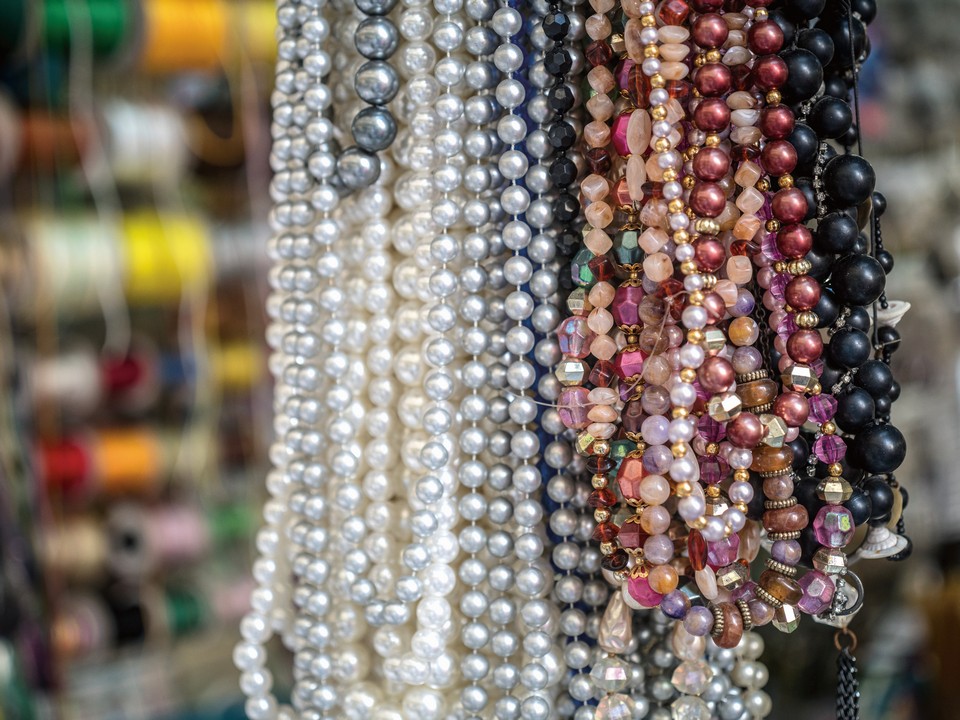
Yu Chau Street (Bead Street)
Yu Chau Street
{{title}} Address {{address}} Website {{website}} More info — also affectionately known as Bead Street — is where you can shop for all the beads and sewing supplies you’ll ever need. The stores stock everything from wood and plastic to glass, which can be used for handmade jewellery, bedazzling smartphones and even decorating gel nails. If you’re not sure where to start, try Mei Tat Hong (Address: 219 Yu Chau Street, Sham Shui Po, Kowloon ; Tel: +852 2498 8609), which offers a wide range of beads, buttons, ribbons and even high-quality Swarovski crystals. Another recommended store is Mee Ngai Wah (Address: 289-291 Yu Chau Street, Sham Shui Po, Kowloon ; Tel: +852 2386 9431), which specialises in costume jewellery, especially those made from sterling silver.
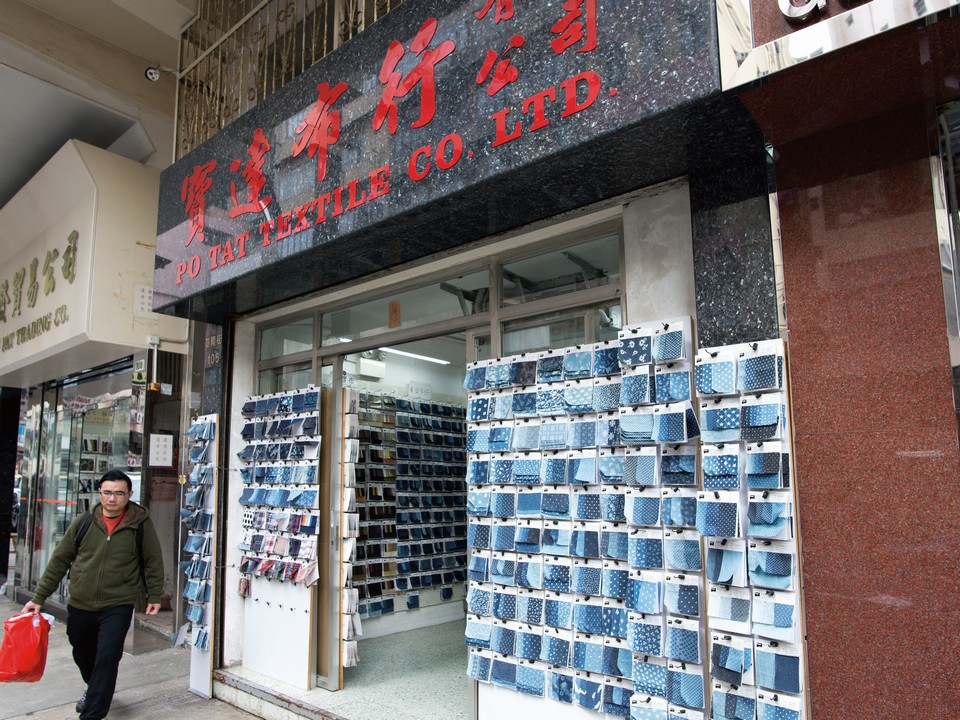
Ki Lung Street (Button Street)
Ki Lung Street
{{title}} Address {{address}} Website {{website}} More info is also known colloquially as Button Street due to the amount of wholesale vendors selling different types of garment fasteners. Aside from buttons, zippers and clasps, you’ll also find stores here that sell ready-to-wear pieces, as well as various textiles. In fact, Ki Lung Street is also home to a fabric market that’s frequented by local designers. If you want to pick up some fabric, note that most stalls start selling from the early morning and are closed over the weekends.
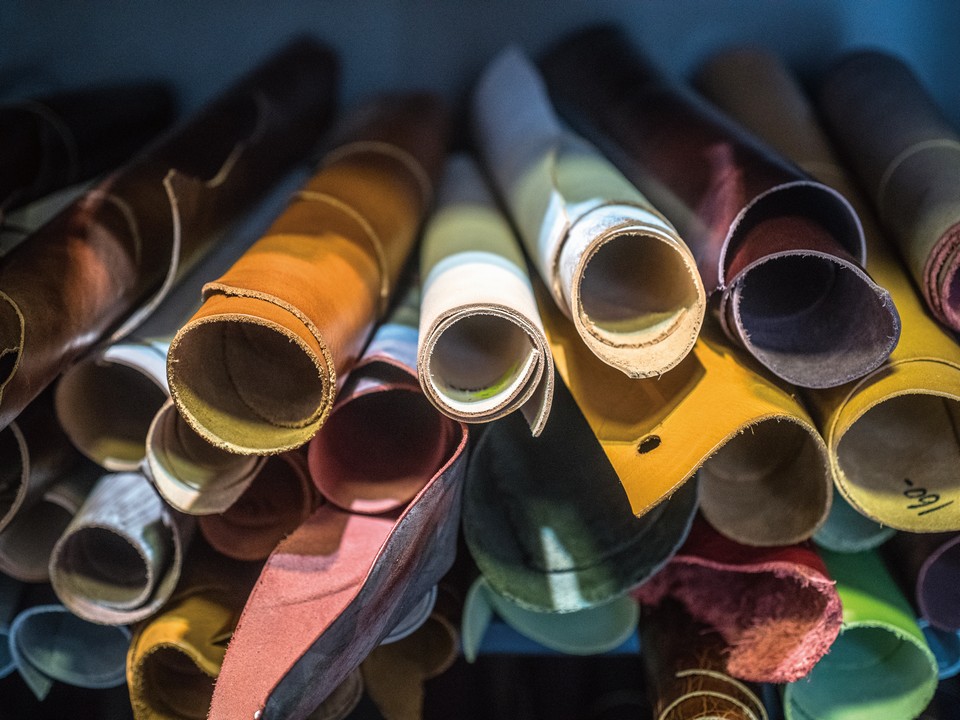
Tai Nan Street (Leather Street)
During the peak of Hong Kong’s manufacturing boom, Tai Nan Street
{{title}} Address {{address}} Website {{website}} More info was home to many factories that produced leather, fabrics and accessories. Today, only a handful of vendors from that era remain, including Luen Cheong Leather Hong Kong (Address: 173 Tai Nan Street, Sham Shui Po, Kowloon ; Tel: +852 2393 5926), which was established in 1948 and specialises in locally made vegetable tanned cow hides. In recent years, the street’s welcomed a second wave of artisans, such as Alri Star Leather Factory (Address: 189 Tai Nan Street, Sham Shui Po, Kowloon ; Tel: +852 3791 2217) and Brothers Leathercraft (Address: 207-209 Tai Nan Street, Sham Shui Po, Kowloon ; Tel: +852 9136 0897), which offer quality hides as well as workshops that teach aspiring craftsmen how to make their very own leather goods.
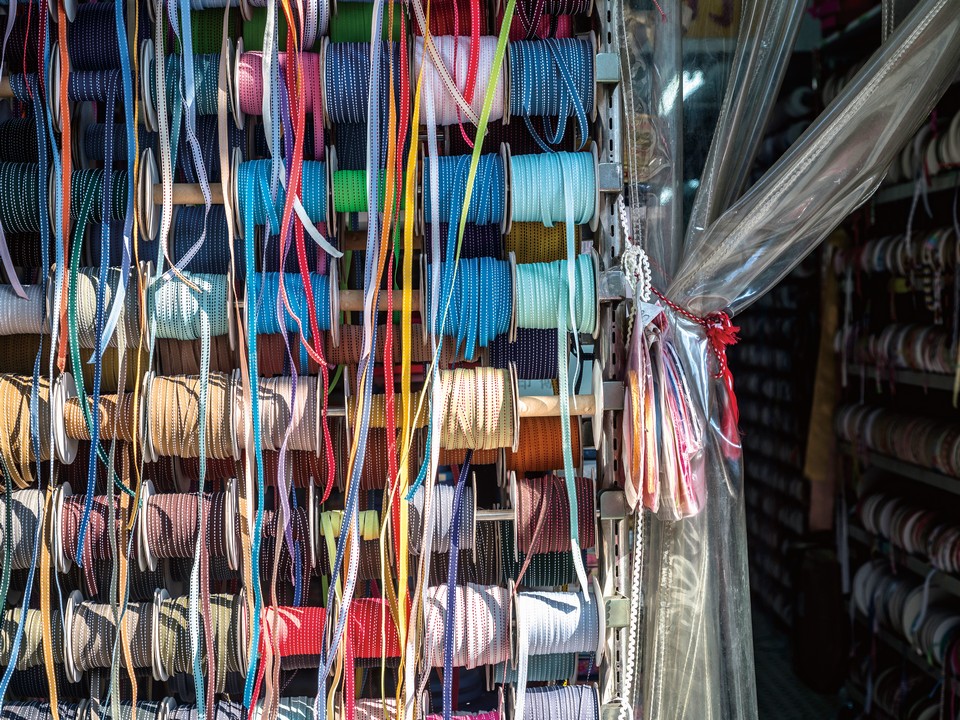
Nam Cheong Street (Ribbon Street)
Nam Cheong Street
{{title}} Address {{address}} Website {{website}} More info was an integral part of Sham Shui Po’s textiles and manufacturing industry in the 1950s and 1960s. Even now, it’s one of the best places to find lace and ribbon in all sizes, shapes and colours. Mostly sold at wholesale prices, these ribbons and trimmings are great for DIY crafts or for brightening up any article of clothing.
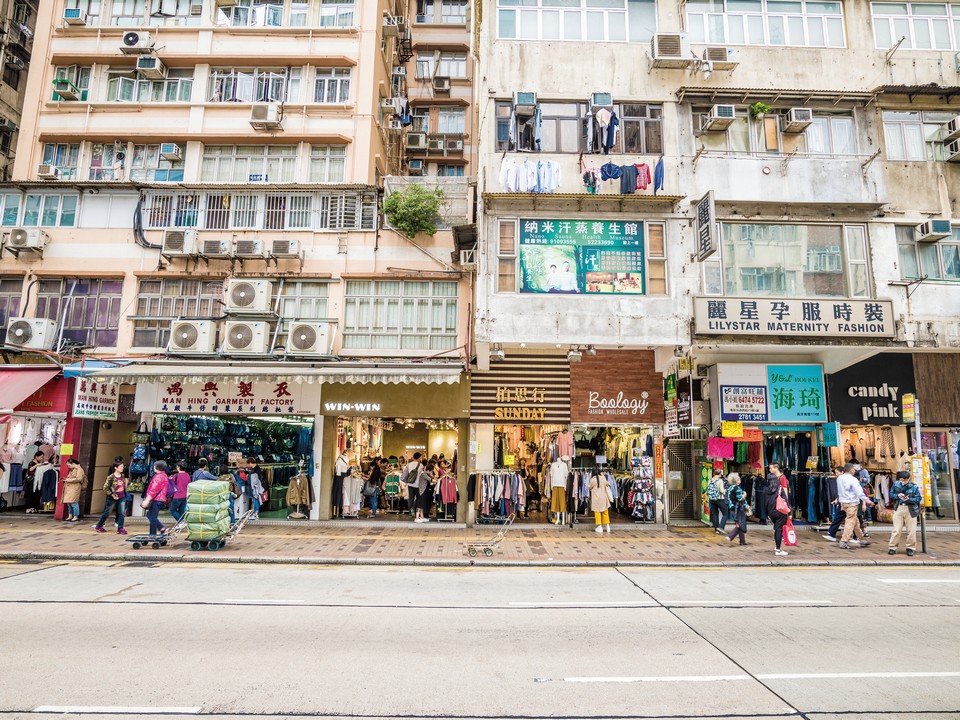
Cheung Sha Wan Fashion Road
A great place to score a real fashion bargain, Cheung Sha Wan Fashion Road
{{title}} Address {{address}} Website {{website}} More info boasts a wide array of shops selling fabrics, buttons, embellishments and ready-to-wear pieces — almost all at wholesale prices. Whether you’re looking for new outfits or an accessory to brighten up a dress, you can easily spend hours here, sifting through the dizzying range of products on offer. Happy shopping!
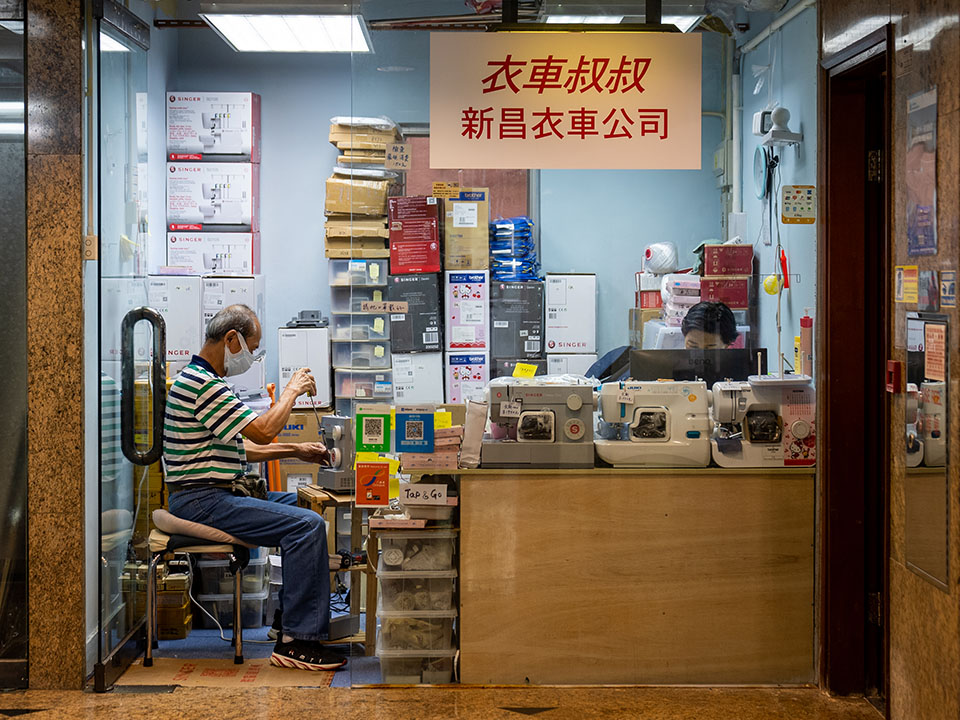
Sun Cheong Sewing Machine Company ![]() {{title}} Address {{address}} Website {{website}} More info
{{title}} Address {{address}} Website {{website}} More info
This humble little store is always filled with sewing machines. The owner, Peter Yu, has been fixing sewing machines for more than 40 years, having inherited the trade from his father. Affectionately dubbed ‘Uncle Sewing Machine’ by his customers, Yu also sells second-hand machines, from basic domestic devices to vintage models that date back to the late 1800s.
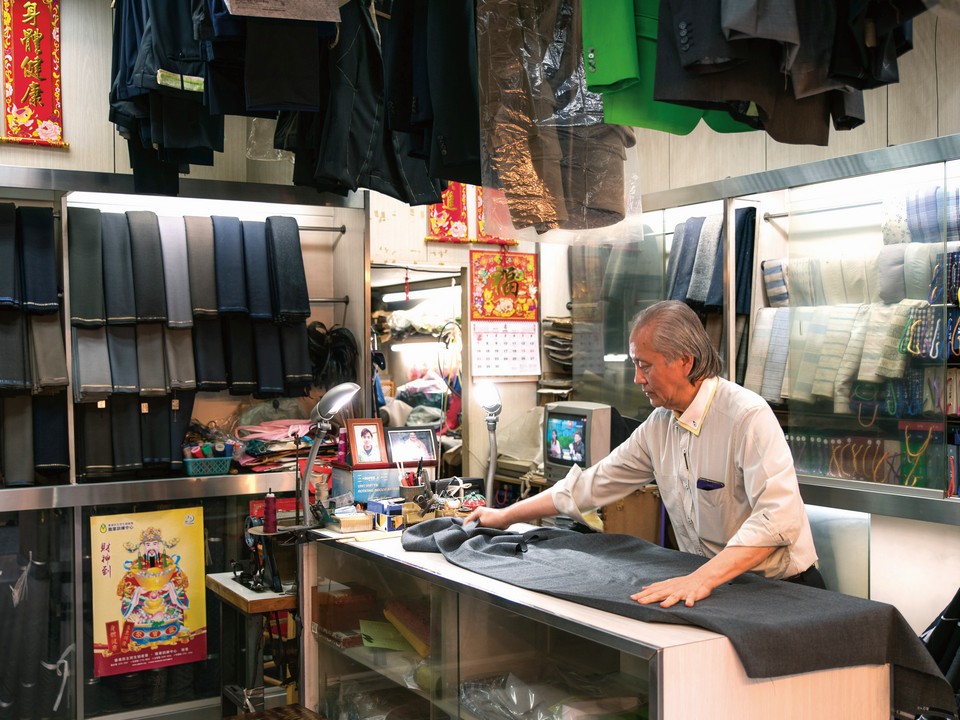
Boma Tailor Hong Kong
Originally established on Nam Cheong Street in 1981, Boma Tailor has made its home on Wong Chuk Street since 1997. Owner Paul To is one of the few tailors left in Hong Kong who still creates high-quality bespoke suits that are all cut and sewn by hand and sold at affordable prices. From suit jackets to trousers, English to Italian cuts, whatever your needs may be, Boma will cater to them — and you can be assured that your suits are one-of-a-kind, custom-made just for you.
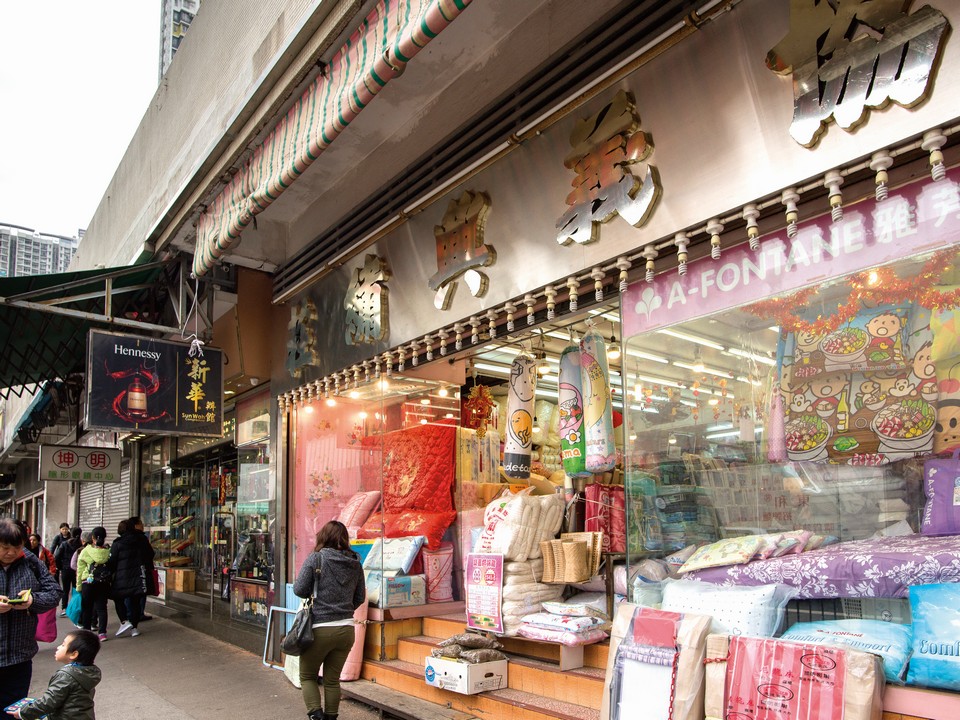
Hip Yee Hing Embroidery
Hip Yee Hing’s founder learned how to make pure cotton bedding by hand while working as an apprentice in Shanghai. He’s since passed on the skills of this disappearing craft to his daughter, who now manages the store. The handwoven quilts aren’t cheap, but they’re exceptionally warm and sturdy and can last for decades. Aside from quilts, Hip Yee Hing
{{title}} Address {{address}} Website {{website}} More info also sells pillows, mattresses and bed covers.
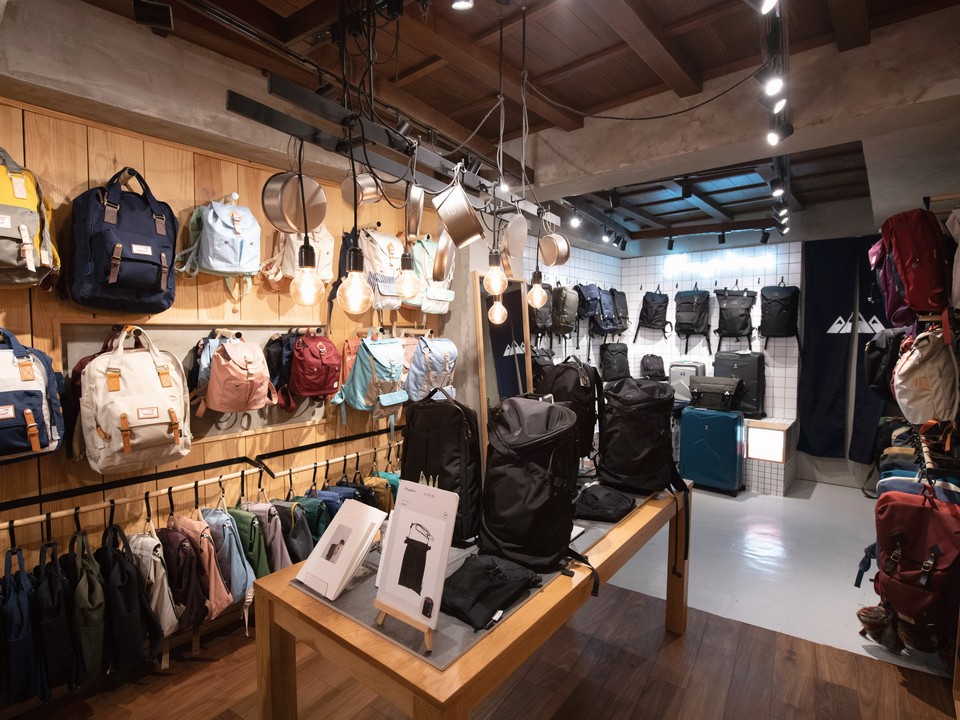
Doughnut
A rising local designer backpack label, Doughnut
{{title}} Address {{address}} Website {{website}} More info started as an online store before opening a boutique in Sham Shui Po in 2013. The brand has since expanded and now has several stores around Hong Kong. Its cute backpacks and hipster-esque luggage come in countless colours and sizes and are perfect for any outdoor adventure or fashion statement.
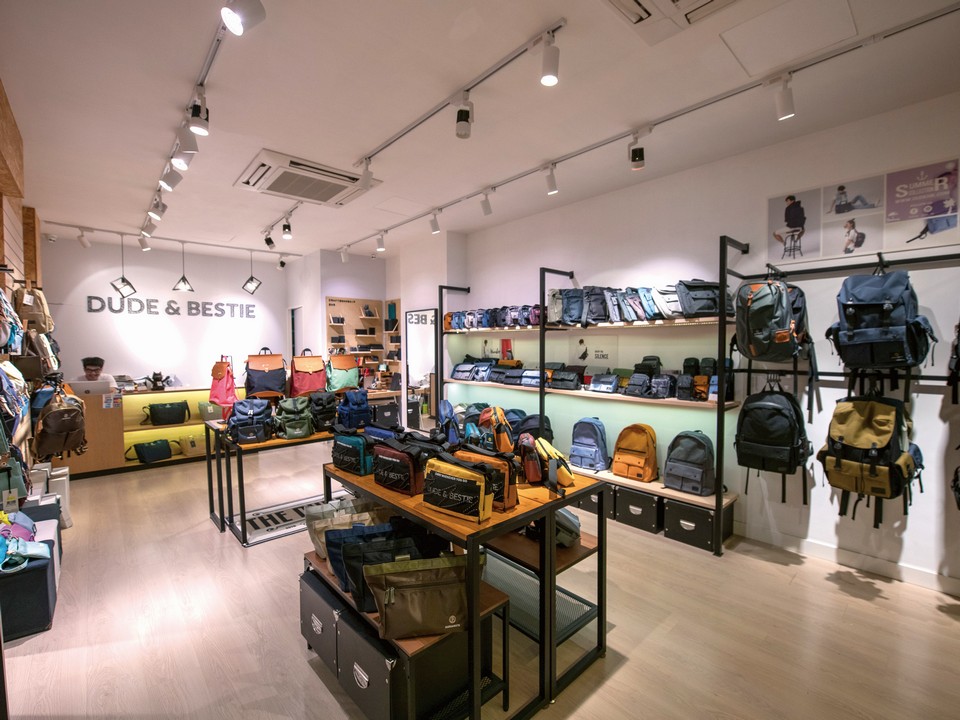
Dude & Bestie
Founded in 2012, this homegrown Hong Kong brand designs chic and functional bags for both men and women. Although you can shop for items on Dude & Bestie
{{title}} Address {{address}} Website {{website}} More info ’s website, it is a pleasure to visit the brick-and-mortar shop in Sham Shui Po, which is fully stocked with the brand’s latest goods, ranging from practical briefcases to waterproof and wear-resistant bags ideal for the outdoors. You can even personalise your purchase with the shop’s vintage Kingsley hot foil stamping machine from the 1970s.
Information in this article is subject to change without advance notice. Please contact the relevant product or service providers for enquiries.
The Hong Kong Tourism Board disclaims any liability as to the quality or fitness for purpose of third party products and services; and makes no representation or warranty as to the accuracy, adequacy or reliability of any information contained herein.



